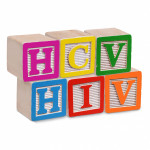People on a stable HIV treatment regimen consisting of three antiretrovirals (ARVs) who switch to a two-drug regimen of a boosted protease inhibitor plus Epivir (lamivudine) do as well on treatment as those who remain on a three-drug regimen, aidsmap reports.
Reducing the number of ARVs in a regimen may mitigate treatment-related toxicities and also lower the likelihood of potentially harmful interactions with other medications.
Presenting their findings at the 16th European AIDS Conference in Milan, researchers from the GESIDA network of Spanish HIV researchers conducted a meta-analysis of four randomized trials including 1,051 people with HIV that compared remaining on a successful three-drug regimen with switching to a regimen of a boosted protease inhibitor and Epivir.
The ATLAS study compared Norvir (ritonavir)-boosted Reyataz (atazanavir) plus Epivir to Norvir-boosted Reyataz plus two nucleoside reverse transcriptase inhibitors (NRTIs). The DUAL study compared Norvir-boosted Prezista (darunavir) plus Epivir to Norvir-boosted Prezista plus Truvada (tenofovir disoproxil fumarate/emtricitabine) or Epzicom (abacavir/lamivudine). The SALT trial compared Norvir-boosted Reyataz plus Epivir to Norvir-boosted Reyataz plus two NRTIs. The OLE trial compared Kaletra (lopinavir/ritonavir) and Epivir to Kaletra plus two NRTIs.
Forty-eight weeks after switching to a two-drug regimen, 84.7 percent of participants had an undetectable viral load, compared with 83.2 percent of those who stayed on a three-drug regimen. The narrow difference between these two rates meant that the two-drug regimens were noninferior to, or as effective as, the three-drug regimens.
At week 48, a respective 4 percent and 3.04 percent of those in the two- and three-drug study arms had a detectable viral load. This category includes those who experienced viral rebound on treatment and those who stopped treatment for other reasons.
These treatment outcomes were consistent regardless of which protease inhibitor was used, the sex of the participant or whether he or she had hepatitis C virus (HCV).
To read the aidsmap article, click here.







Comments
Comments